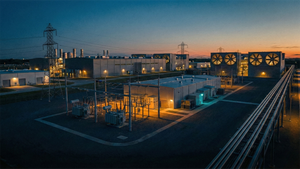The Ranking of the World’s Richest Countries in Early 2024 is Announced
Global Finance recently announced the ranking of the world’s richest countries and regions at the beginning of 2024. The top 10 are Luxembourg, Ireland, Singapore, Qatar, Macau Special Administrative Region, Switzerland, United Arab Emirates, Republic of San Marino, Norway and the United States.

(Photo via unsplash.com)
TAIPEI, TAIWAN (Merxwire) – Global Finance recently announced the ranking of the world’s richest countries and regions at the beginning of 2024. The top 10 richest countries or regions are Luxembourg, Ireland, Singapore, Qatar, Macau Special Administrative Region, Switzerland, United Arab Emirates, the Republic of San Marino, Norway, and the United States. Among them, Luxembourg, Macao, and San Marino have amazing economic strengths despite their small hinterlands.
The report found that the top rich countries in the world, including Luxembourg, San Marino, Switzerland, and Singapore, are all small but very wealthy. Mainly because it has a relatively advanced financial and tax system, which can attract more foreign investment, bank deposits, and professional talents. During COVID-19, even though a high proportion of the aging population will be at higher risk of contracting the disease, it still has more resources to care for those infected, so the economic impact will be smaller.
Countries and regions with large energy assets and gaming industries are also highlights of this ranking. Qatar and the United Arab Emirates have created strong economic strength because of their petroleum energy, which can bring huge profits. Macau is a famous gambling paradise in Asia. It also has European cultural and architectural monuments left over from the Portuguese colonial period. Therefore, many tourists come here specifically for sightseeing or to play in the casinos, which increases their income.
How to measure the wealth of a country or region is to first use GDP to evaluate the overall value of the goods and services produced by a country. Then divide GDP by the number of full-time working residents to get Purchasing power parity to measure the real prosperity and purchasing power parity of each country. This is a more ideal method to evaluate the wealth and poverty of a country.
Luxembourg ranked first, is world-famous for its strong financial strength, and has become a representative of the richest country in the world, actively demonstrating its booming and diversified economic strength to the world. Singapore, ranked third, is the financial and trade center of Asia. Its hub position in Southeast Asia is very important in terms of trade status and strategic location. Its advanced infrastructure helps its economic development. Taiwan ranked 15th in this ranking, closely behind Denmark, the Netherlands, and Hong Kong, and better than South Korea at 31st and Japan at 36th.

(Photo via unsplash.com)
Ireland is world-famous for its innovative industries, biotech, and pharmaceutical industries. It ranks first in the world in immunology and dairy research and second in the world in nanotechnology and agriculture, attracting many professional talents to find employment. The excellent economic flexibility is known as a tax haven for companies, with a corporate tax rate of only 12.5%. This has attracted many multinational companies to set up companies, including large American companies such as Apple, Microsoft, Google, and Pfizer, which have all moved their financial registration places to Ireland. By 2022, multinational enterprises will account for more than 60% of the total added value of the Irish economy.
Under the development of a highly affluent economy, there is also a real problem of wealth disparity. Economic trends during COVID-19 reveal inequalities across countries and occupations. The groups that are more affected by the lockdown economy are blue-collar workers with lower wages at the bottom of society. They are unable to go out to work during the lockdown or need to take greater safety risks to go out to work. Their income is lower than those white-collar workers who can work from home, and some people’s livelihoods are even in trouble.
After the epidemic, under the influence of global inflation and the Ukraine-Russia war, food and energy crises were triggered, and basic living costs increased, making life more difficult for families with lower incomes. IMF statistics show that the per capita purchasing power of the 10 poorest countries in the world is US$1,432, while the per capita purchasing power of the 10 richest countries is more than US$105,170. The difference is as high as 73 times, which is quite astonishing. The high per capita GDP figures in some wealthy countries come from foreigners coming to avoid taxes. Therefore, the lives of local people are not as good as imagined. These are real problems that exist under the affluence.
Some people may consider moving to these rich countries, thinking that their income levels may increase. However, in order to avoid decision-making errors, it is recommended to stay for a short period of time to understand the local culture, living environment and working environment. Also note that higher incomes often come with higher living costs and prices. Therefore, there are still many unpredictable unknowns as to whether we can achieve the expected value of material economy and quality of life growing together.
More News
View More




Recent Quotes
View MoreQuotes delayed at least 20 minutes.
By accessing this page, you agree to the Privacy Policy and Terms Of Service.